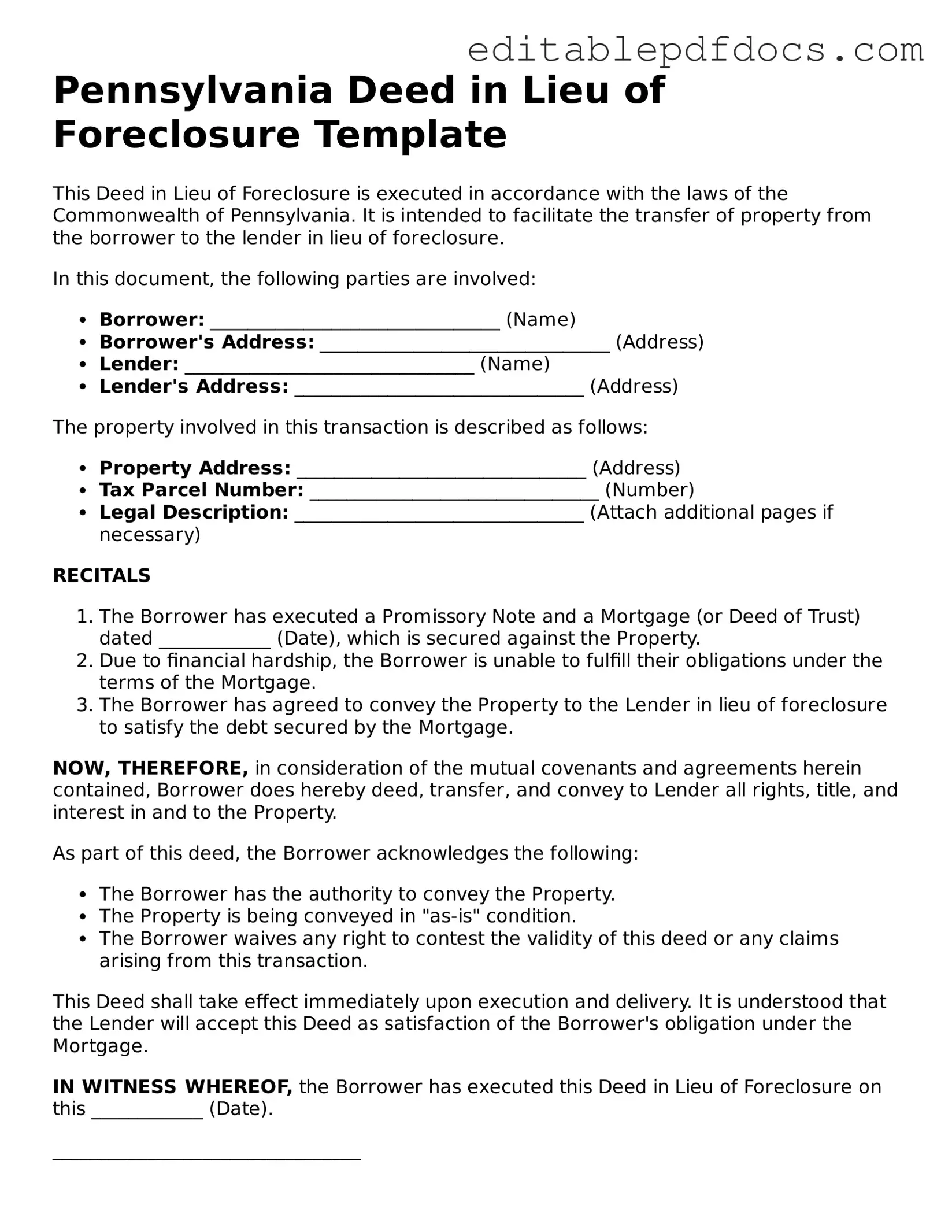Deed in Lieu of Foreclosure Document for Pennsylvania
A Deed in Lieu of Foreclosure is a legal document in Pennsylvania that allows a homeowner to voluntarily transfer ownership of their property to the lender in order to avoid foreclosure. This option can provide a more streamlined process for both parties, potentially alleviating the negative impacts associated with foreclosure. For those considering this option, completing the necessary form is an important step; click the button below to get started.
Open Editor Now
